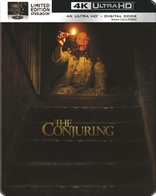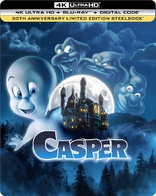 The Trouble With LCD TV's: Motion Blur and the 120Hz Solution.
The Trouble With LCD TV's: Motion Blur and the 120Hz Solution.
When I first saw LCD TVs in stores and at exhibitions years ago, I was like, WTF? Why would anyone buy these? They were blurry as hell—couldn't everyone see that? Over time, the blur problem has subsided thanks to improved refresh rates of 8ms and less. But motion blur is not only caused by refresh rate, it's a natural problem that arises as LCDs flip from frame to frame, 60 times per second. The solution is to double the flipping, to 120 times per second, hence high-end "120Hz" LCDs hitting the market. We've talked about these sets when they were just launching. But there's new controversy as explained in this Home Theater Mag article right now.
As video editor Geoff Morrison's piece explains, part of the blur perception comes from the fact that, on standard LCDs, frames are frozen on the screen for 1/60th of a second, and then abruptly shift to the next frame. This is called "sample and hold." Other technologies like plasma and DLP don't hold the frame for that whole 1/60th of a second, but pulse from one frame to the next, with some healthy downtime. The obvious solution is to double the frame rate to 120Hz.
One 120Hz method simulates the other TV technologies by introducing that downtime. Between each bright frame is a frame that's totally black or very dim (as shown above). The rapid succession of bright and dark frames, 120 times per second, looks smooth to the eye, and keeps some of the LCD's issues hidden in the darkness. This technique is the best, according to Morrison. Alas, it is dying out.
The trouble with the method is that it reduces the prized brightness of an LCD. It is a sad truth that, in the cutthroat world of Best Buy TV selling, the brightest TV often wins.
That's why the second method (shown below) is coming into vogue. Rather than splice in black frames, LCD makers introduce a Photoshop-style interpolated frame, basically a morphed midpoint between Frame 1 and Frame 3. Thanks to faster processors, this is easier and easier to do, but it has problems. "There is the potential, though, of it looking too smooth," says Morrison. (What's funny is, "looking too smooth" was probably Morrison's life goal in high school, and now he condemns it!)
This is only a piece of the larger LCD issue Morrison discusses, and the gist is that even the inferior 120Hz concepts are improving the situation with motion blur on LCDs (and LCOS projection TVs like Sony's SXRD line). It's a great read, so have a look, or just share your own 120Hz opinions, revelations and nightmares. [Home Theater]
|



















 Linear Mode
Linear Mode

